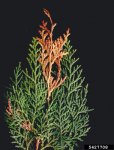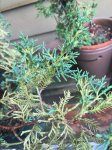Rubberbandman
Yamadori
HI everyone!!
First post on this site....was a member of another large bonsai site but they seem a bit drowsy over there so i will try here!
I am from the Sunny state of Virginia(usa)!
Got two shimpaku's that have developed this ...i have since moved them to a location that gets filtered sun after 1pm.
First post on this site....was a member of another large bonsai site but they seem a bit drowsy over there so i will try here!
I am from the Sunny state of Virginia(usa)!
Got two shimpaku's that have developed this ...i have since moved them to a location that gets filtered sun after 1pm.



